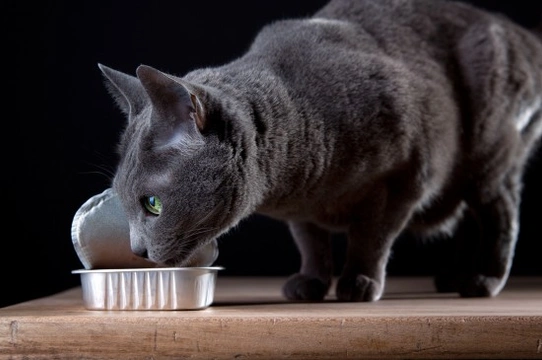
Cat food, calories, and how much to feed
When we talk about what we as people eat and how we maintain, gain or lose weight, we talk in terms of calories, and generally plan our diets accordingly. However, the calorie count of different types of cat food is not something that is usually mentioned on packaging or discussed commonly in any great detail, making maintaining your cat’s diet rather more hit and miss!
However, just like people, cat’s weight depends on their calories ingested versus calories spent, and gaining a better understanding of this can help you to do all sorts of things, from comparing different cat foods to helping your cat’s weight to remain stable, and know how many treats you can feed!
Read on to learn all about cat food, calories, and how many calories cats should eat per day.
What is a calorie?
A calorie is a measurement of energy, and explained literally, one calorie is the amount of energy required to raise the temperature of one gram of water by one degree Celsius.
When it comes to discussing diet and the amount of calories in food versus calories expended, a calorie is best explained as the amount of energy within any given food, and the higher the calorie count, the more energy this provides. How much energy (or calories) is optimum for the cat to consume per day will depend on a range of factors, such as the size, age and activity levels of the cat.
Too many calories per day and the cat will gain weight, too few and the cat will lose weight, and if the balance is just right, your cat will maintain their healthy weight in perpetuity until something changes.
Cats and theirnatural weight maintenance
Cats naturally monitor their own food intake, and will not generally eat past the point that they are full. However, cats can, as we all know, suffer from weight problems and obesity, which is usually the result of too many calories per day being consumed for the cat’s activity levels.
This is why pet food for kittens and younger adult cats tends to be higher in calories than food for mature cats; to take into account the natural drop in energy levels that cats face as they get older.
Obviously, maintaining a healthy weight while being permitted to graze freely depends on not just the calorie count of the cat food, but how full it makes the cat feel. If a cat does not feel full, they will keep eating, even if they have technically consumed enough calories to support their activity levels. As we all know, the same quantity of foods of different types can vary considerably in their calorie counts; a 100 calorie portion of veg will be much larger than a 100 calorie portion of chocolate, for instance, and will prove more filling.
Feeding high calorie foods, particularly table scraps and lots of treats, can all cause weight gain in the cat, as foods like these do not prove as filling as proper, balanced meals.
How many calories do cats need per day?
The amount of calories your cat will need to eat per day will, as mentioned, depend on their size, age, and activity levels. Just as with people, different cats have different builds, with some being very petite and others much larger and rangier, so it is important to tailor your cat’s feeding regime to suit their own needs.
General guidelines on the calorie intake for cats varies according to life stage. Growing kittens may need up to 275 calories per day, and adult cats, depending on their size, build and activity levels, tend to need anything from 200-300 calories per day. If your cat is overweight and placed on a restricted diet, they will probably be fed between 180-200 calories per day.
How many calories are in cat food and treats?
Cat food packaging usually includes a guideline table to tell you how much of their food to feed per day, calculated by the size of the cat. Once you have worked out how many calories your cat should be eating per day according to their size, age and activity level, you can then use the calculation in terms of cat food quantity to make a fairly accurate estimate of the calorie count of different portions of ready prepared cat food.
Cat treats, such as Dreamies and Whiskas temptations contain around two calories per treat, and you should consider this when planning your cat’s daily calorie intake.
Working out your cat’s ideal calorie intake
In order to maintain your cat’s weight, you will need to first of all find out the weight of your cat and then perform a simple calculation to find out their ideal calorie intake per day.
- First of all, find out your cat’s exact weight in kilograms.
- Multiply the weight of your cat by thirty, and then add seventy to the final number.
- Now multiply that amount by .8, and the final answer will tell you the amount of calories that your cat eats and needs to eat per day in order to maintain their current weight.
- If your cat is underweight or overweight, you can then use this calculation to make an adjustment to the amount they are fed, in order to change their weight.



